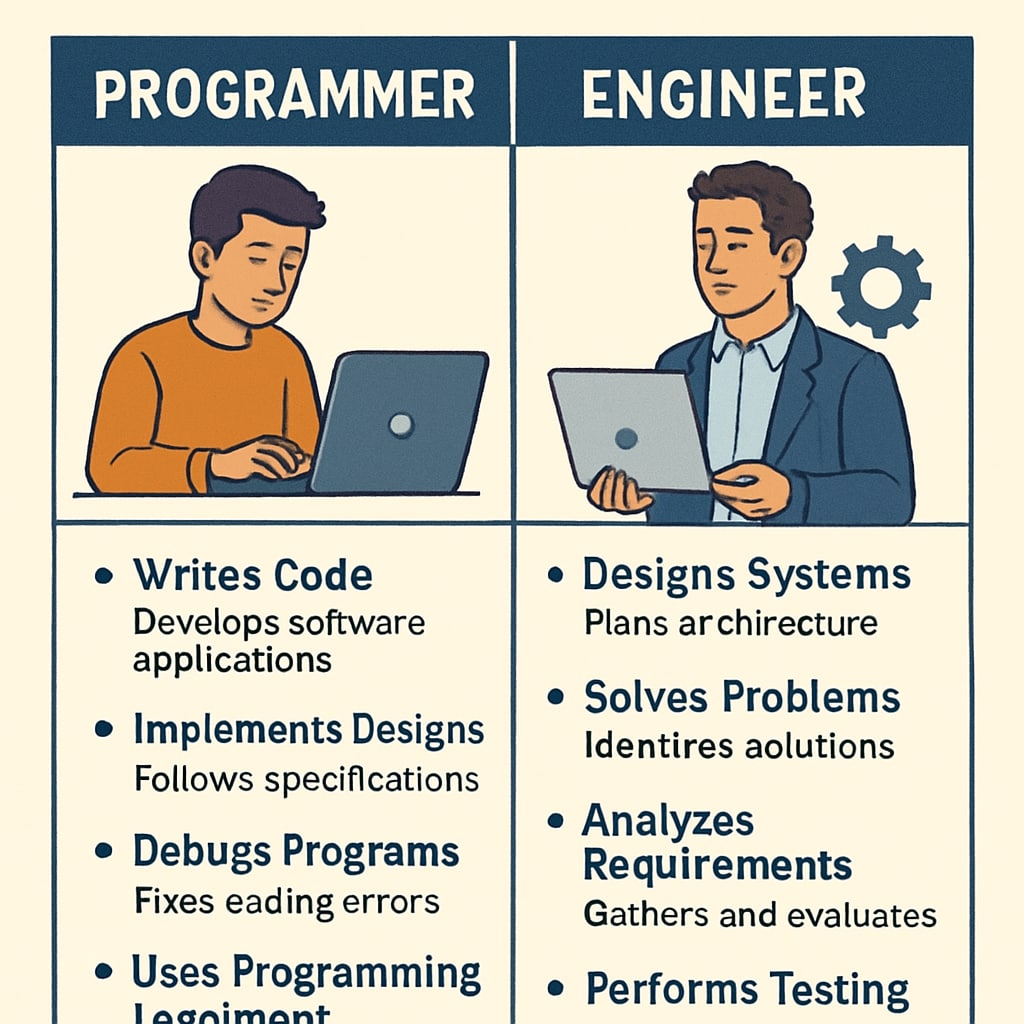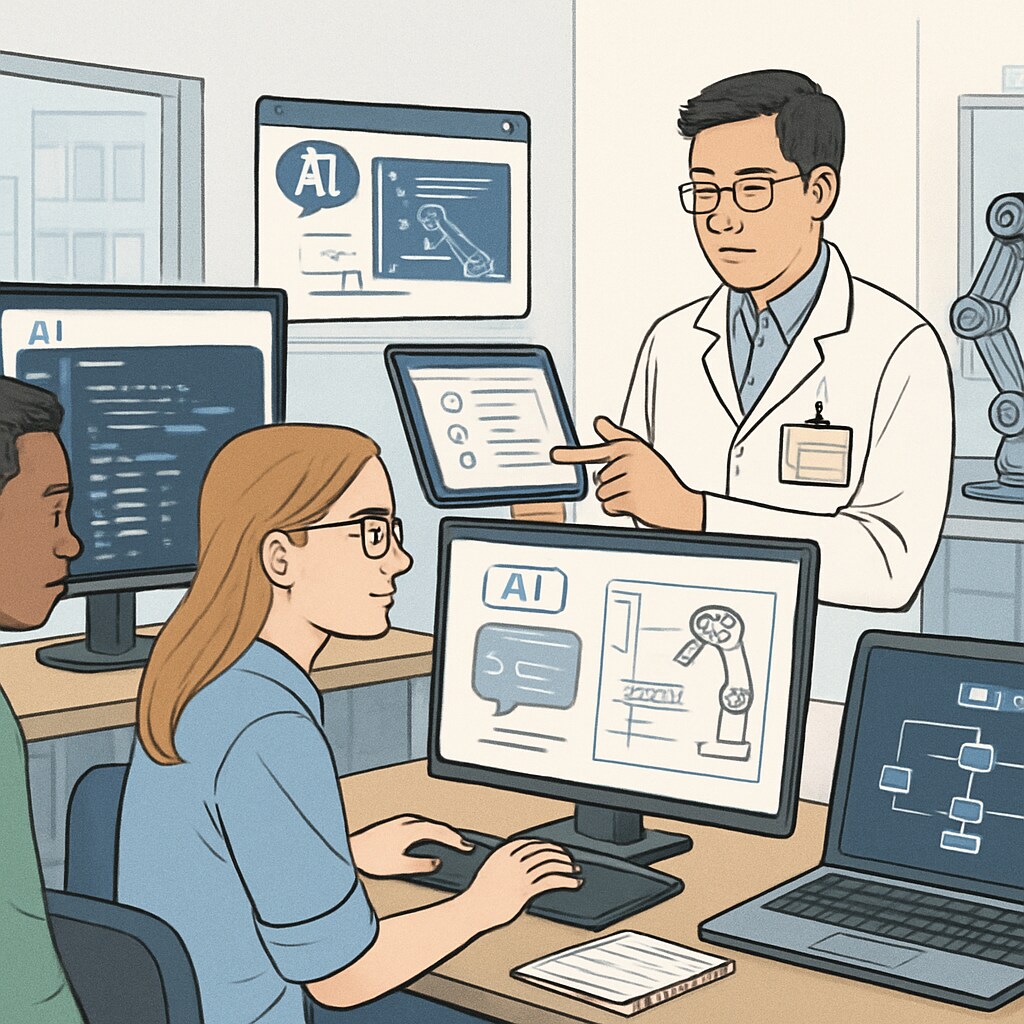In the age of artificial intelligence, career choices like becoming a programmer or engineer have become increasingly complex for students in the K12 phase. With AI reshaping industries and automating tasks, the question arises: what does the future hold for these professions? This article delves into the core differences between programmers and engineers, evaluates the impact of AI on these fields, and provides actionable advice to help teenagers make informed decisions about their career paths.
Understanding the Roles: Programmer vs Engineer
At first glance, programmers and engineers may seem synonymous, but their roles differ significantly. A programmer is primarily focused on writing, testing, and maintaining code for software applications. Their expertise lies in programming languages, debugging, and creating efficient algorithms. On the other hand, an engineer applies scientific principles to design, build, and analyze systems or products. While some engineers may code, their scope often extends to hardware integration, project management, and system design.
For example, a software engineer might oversee the architecture of an entire application, while a programmer focuses on implementing specific features. Both roles demand strong problem-solving skills, but engineers typically require a broader understanding of systems and their interaction with the physical world.

How AI is Transforming Programming and Engineering
The rise of artificial intelligence has introduced both opportunities and challenges in programming and engineering. AI tools like GPT-based code generators and machine learning algorithms can handle repetitive coding tasks, reducing the demand for basic programming skills. However, this does not render programmers obsolete. Instead, it shifts the emphasis toward higher-order skills like debugging AI-generated code, working with AI frameworks, and ensuring ethical AI deployment.
Similarly, engineers are leveraging AI to optimize designs, predict system behaviors, and automate testing processes. For example, AI-driven simulations can analyze stress points in a bridge design, enabling engineers to make data-driven adjustments faster than ever before. However, engineers must also adapt to integrating AI into their workflows, which requires continuous learning.
As a result, both fields are evolving rather than disappearing. The key for young learners is to anticipate these changes and align their skillsets with future demands.

Guiding Youth Toward Smart Career Choices
To help teenagers navigate these complex career paths, parents and educators can focus on the following strategies:
- Assess Interests and Strengths: Encourage students to explore both programming and engineering tasks through school projects, coding bootcamps, or STEM clubs. They should identify which activities they enjoy and excel at.
- Emphasize Lifelong Learning: The AI era demands adaptability. Instill a mindset of continuous learning by exposing students to emerging technologies and fostering curiosity about new developments.
- Highlight Interdisciplinary Skills: Both programmers and engineers benefit from skills like communication, teamwork, and critical thinking. These “soft skills” are often as valuable as technical expertise.
- Seek Mentorship: Connecting with professionals in these fields can provide valuable insights into industry trends and day-to-day responsibilities.
- Research Market Trends: Encourage students to stay informed about how AI is shaping the job market. Platforms like Wikipedia’s AI overview or Britannica’s AI resources are excellent starting points.
Conclusion: Adapting to the AI-Powered Future
The rapid development of artificial intelligence has undoubtedly created uncertainty for students considering careers as programmers or engineers. However, it has also opened doors to exciting new possibilities. By understanding the differences between these roles, recognizing the impact of AI, and fostering a mindset of adaptability, today’s youth can make smart, informed decisions about their futures. The key lies in embracing change and preparing for a dynamic career landscape where technology and human creativity coexist.
As we look ahead, the best advice for young learners is to focus on building a strong foundation in problem-solving, technical skills, and adaptability. These attributes will not only help them thrive in programming or engineering but also ensure they remain resilient as AI continues to evolve.
Readability guidance: This article uses short paragraphs, lists, and examples to enhance clarity. Transitions like “however,” “in addition,” and “for example” ensure smooth flow. Passive voice and long sentences are minimized for better readability.


